
How to Use 12v Adapter: Examples, Pinouts, and Specs
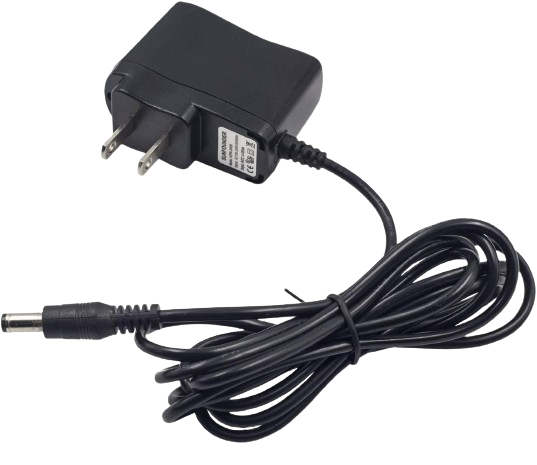
 Design with 12v Adapter in Cirkit Designer
Design with 12v Adapter in Cirkit Designer12V Adapter Documentation
1. Introduction
The 12V Adapter is a power supply device designed to convert alternating current (AC) from the mains into a stable 12V direct current (DC) output. This adapter is widely used in powering a variety of electronic devices, including microcontrollers, LED strips, routers, CCTV cameras, and other low-power devices that require a 12V DC input.
Common Applications:
- Powering microcontroller boards (e.g., Arduino, Raspberry Pi with a step-down module)
- Supplying power to LED lighting systems
- Operating small DC motors and actuators
- Providing power to network devices like routers and modems
- Powering surveillance systems (CCTV cameras)
The 12V adapter is a reliable and efficient solution for delivering consistent power to your electronic projects and devices.
2. Technical Specifications
The following table outlines the key technical specifications of a standard 12V adapter:
| Parameter | Specification |
|---|---|
| Input Voltage | 100-240V AC, 50/60Hz |
| Output Voltage | 12V DC |
| Output Current | Typically 1A, 2A, or 5A (varies by model) |
| Power Rating | 12W, 24W, or 60W (depending on current) |
| Connector Type | Barrel jack (5.5mm outer, 2.1mm inner) |
| Polarity | Center positive (+), outer negative (-) |
| Efficiency | ≥ 80% |
| Operating Temperature | 0°C to 40°C |
| Storage Temperature | -20°C to 70°C |
| Cable Length | Typically 1m to 1.5m |
Pin Configuration and Description
The 12V adapter typically uses a barrel jack connector. Below is the pin configuration:
| Pin | Description |
|---|---|
| Center Pin | Positive terminal (+12V DC) |
| Outer Sleeve | Negative terminal (Ground, GND) |
Note: Always verify the polarity of the adapter before connecting it to your device. Incorrect polarity can damage your components.
3. Usage Instructions
Connecting the 12V Adapter to a Circuit
- Verify Voltage and Current Requirements: Ensure the device you are powering requires a 12V DC input and that the adapter's current rating meets or exceeds the device's requirements.
- Check Polarity: Confirm that the adapter's polarity matches the device's input. Most 12V adapters are center-positive.
- Connect the Barrel Jack: Insert the barrel jack into the device's power input port.
- Plug into Mains: Connect the adapter to a mains power outlet (100-240V AC).
Important Considerations:
- Avoid Overloading: Do not connect devices that exceed the adapter's current rating. For example, if the adapter is rated for 2A, ensure the total current draw of connected devices is ≤ 2A.
- Use in a Dry Environment: Avoid exposing the adapter to moisture or liquids to prevent short circuits or damage.
- Ventilation: Ensure proper ventilation around the adapter to prevent overheating.
- Check Compatibility: If using with a microcontroller (e.g., Arduino), ensure the voltage regulator on the board can handle 12V input.
4. Example: Using a 12V Adapter with an Arduino UNO
The Arduino UNO can be powered using a 12V adapter through its DC barrel jack. The onboard voltage regulator steps down the 12V input to 5V for the microcontroller.
Circuit Diagram
Below is a simple connection diagram for powering an Arduino UNO with a 12V adapter:
+-------------------+ +-------------------+
| 12V Adapter | | Arduino UNO |
| (Barrel Jack) | | (DC Barrel Jack) |
| | | |
| +12V (Center) +------>+ VIN |
| GND (Outer) +------>+ GND |
+-------------------+ +-------------------+
Sample Code
Here is an example Arduino sketch to blink an LED while the board is powered by a 12V adapter:
/*
Blink Example
This code blinks an LED connected to pin 13 of the Arduino UNO.
The board is powered using a 12V adapter connected to the DC barrel jack.
*/
void setup() {
pinMode(13, OUTPUT); // Set pin 13 as an output
}
void loop() {
digitalWrite(13, HIGH); // Turn the LED on
delay(1000); // Wait for 1 second
digitalWrite(13, LOW); // Turn the LED off
delay(1000); // Wait for 1 second
}
Note: Ensure the Arduino UNO's onboard voltage regulator is not overloaded by additional components when using a 12V adapter.
5. Troubleshooting and FAQs
Common Issues and Solutions
| Issue | Possible Cause | Solution |
|---|---|---|
| Device does not power on | Incorrect polarity or loose connection | Verify polarity and ensure a secure connection. |
| Adapter gets too hot | Overloading or poor ventilation | Reduce load or improve ventilation. |
| Output voltage is unstable | Faulty adapter or fluctuating mains input | Replace the adapter or use a voltage stabilizer. |
| Arduino resets frequently | Insufficient current from the adapter | Use an adapter with a higher current rating. |
Frequently Asked Questions
Can I use a 12V adapter with a device that requires 9V?
- No, using a 12V adapter with a 9V device can damage the device. Always match the voltage rating.
What happens if I reverse the polarity?
- Reversing the polarity can damage your device. Always check the polarity before connecting.
Can I use a 12V adapter to power multiple devices?
- Yes, as long as the total current draw of all devices does not exceed the adapter's current rating.
Is it safe to leave the adapter plugged in when not in use?
- While most adapters are designed to be safe, it is recommended to unplug them when not in use to save energy and reduce wear.
6. Safety Precautions
- Always use the adapter within its specified voltage and current ratings.
- Do not open or attempt to repair the adapter yourself.
- Keep the adapter away from water, heat sources, and flammable materials.
- Use only certified and high-quality adapters to ensure safety and reliability.
This documentation provides a comprehensive guide to understanding, using, and troubleshooting a 12V adapter. Whether you're powering an Arduino project or a home device, following these guidelines will ensure safe and efficient operation.
Explore Projects Built with 12v Adapter
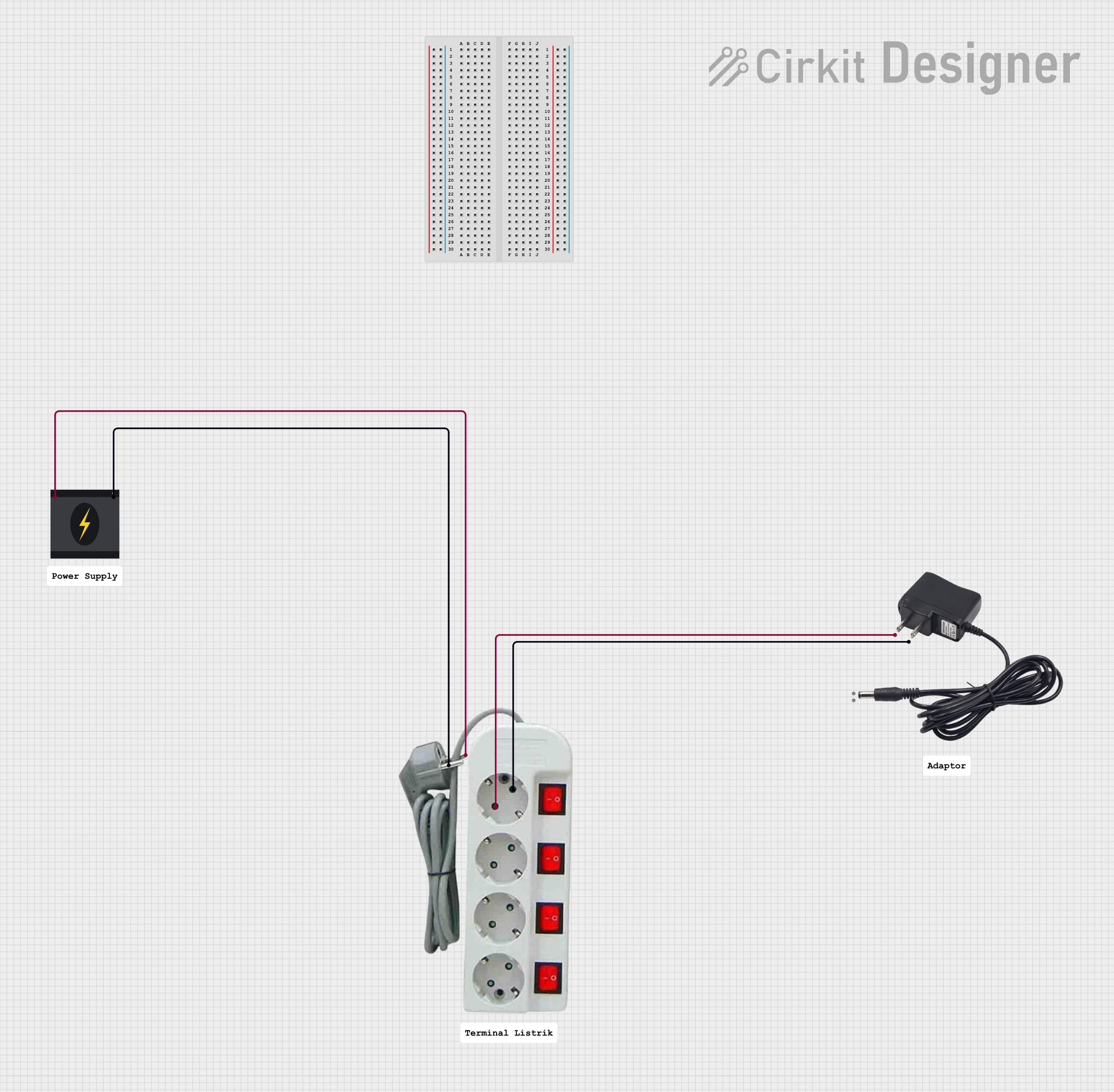
 Open Project in Cirkit Designer
Open Project in Cirkit Designer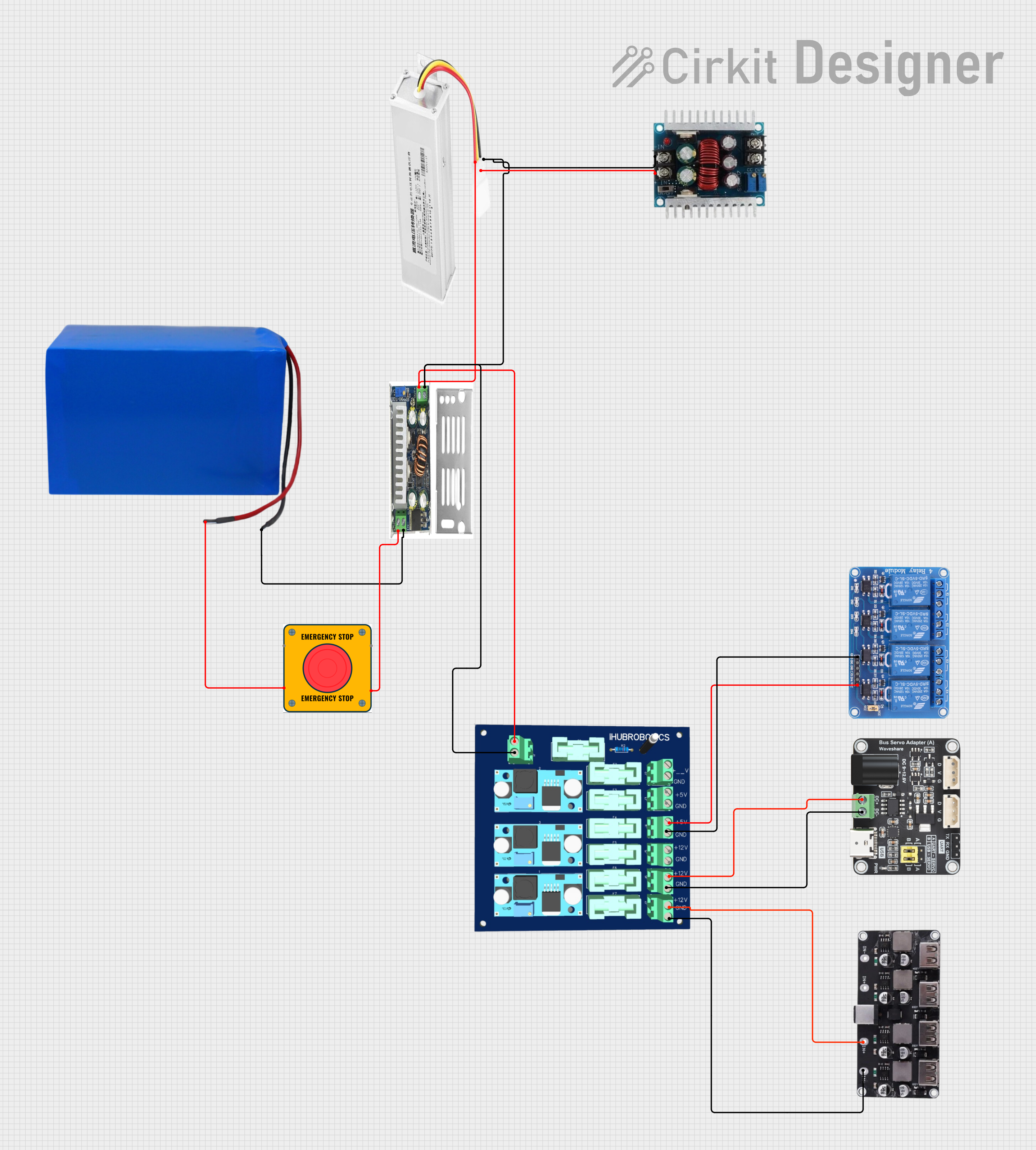
 Open Project in Cirkit Designer
Open Project in Cirkit Designer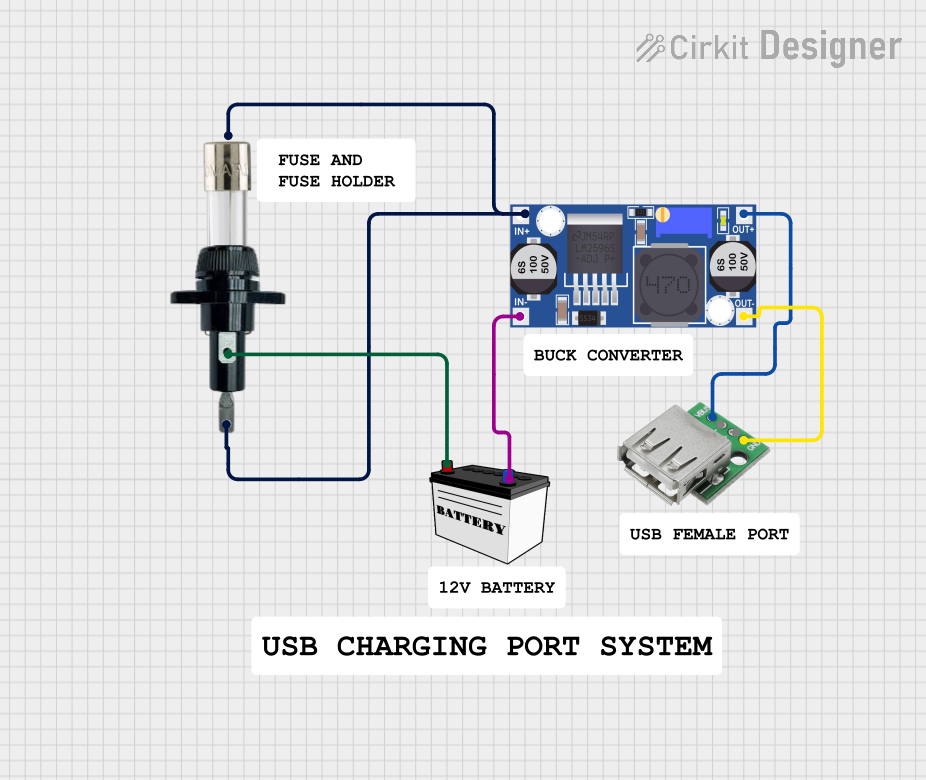
 Open Project in Cirkit Designer
Open Project in Cirkit Designer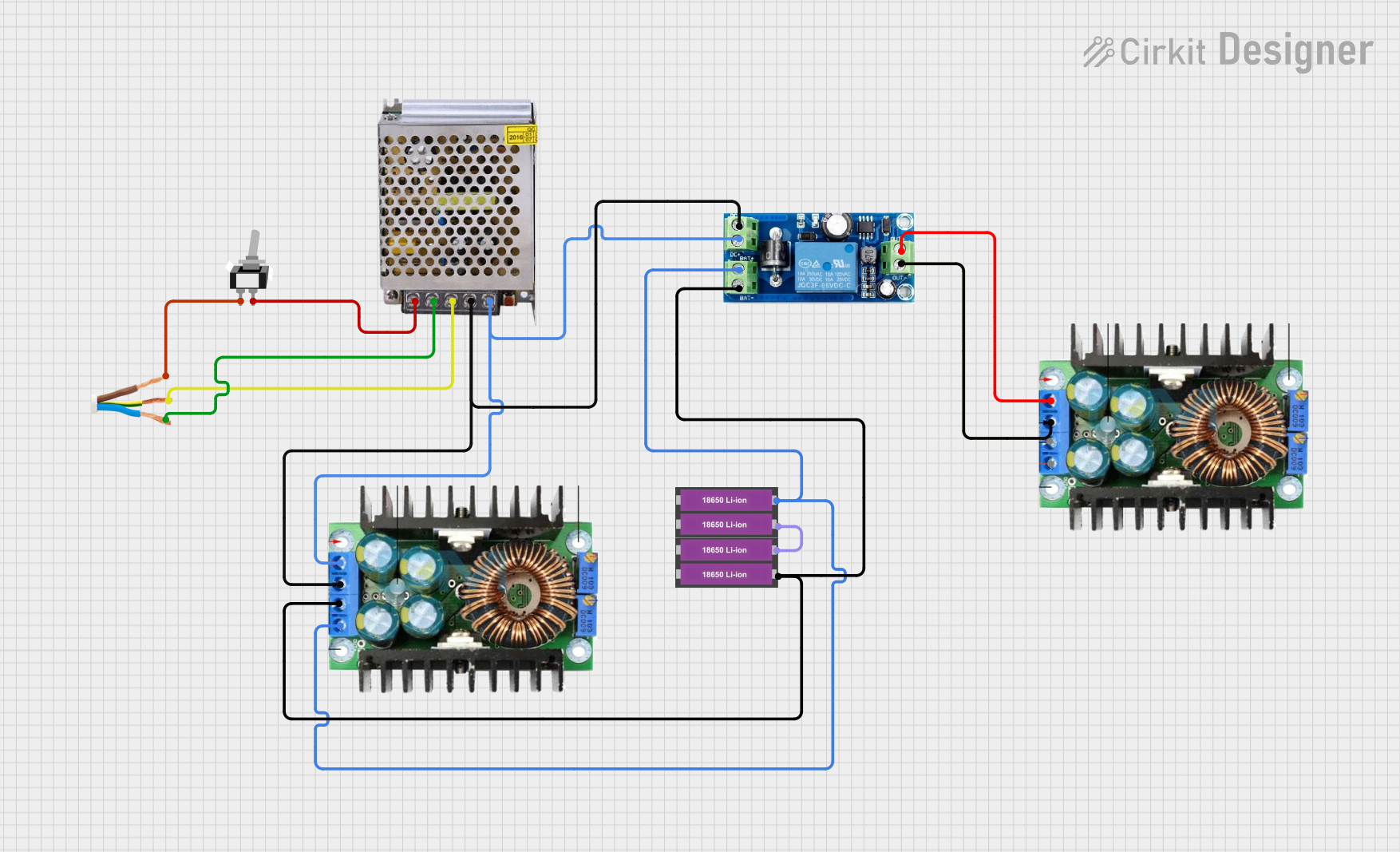
 Open Project in Cirkit Designer
Open Project in Cirkit DesignerExplore Projects Built with 12v Adapter

 Open Project in Cirkit Designer
Open Project in Cirkit Designer
 Open Project in Cirkit Designer
Open Project in Cirkit Designer
 Open Project in Cirkit Designer
Open Project in Cirkit Designer
 Open Project in Cirkit Designer
Open Project in Cirkit Designer